If you’re here you must have a lot of burning questions about breast pumps. This article has answers probably to all of them, so sit back and keep scrolling! It covers everything, from breast pump types, usage, circumstances when it’s most helpful, to advantages & disadvantages and safety tips.
I’m not going to convince you that breast pump is a must-have. I’m not going to tell you that it’s a totally useless gadget either. All moms and babies differ, and have various needs and preferences.
It’s totally up to you, whether you will buy a breast pump, but here you’ll find all essential information that will make your decision easier.
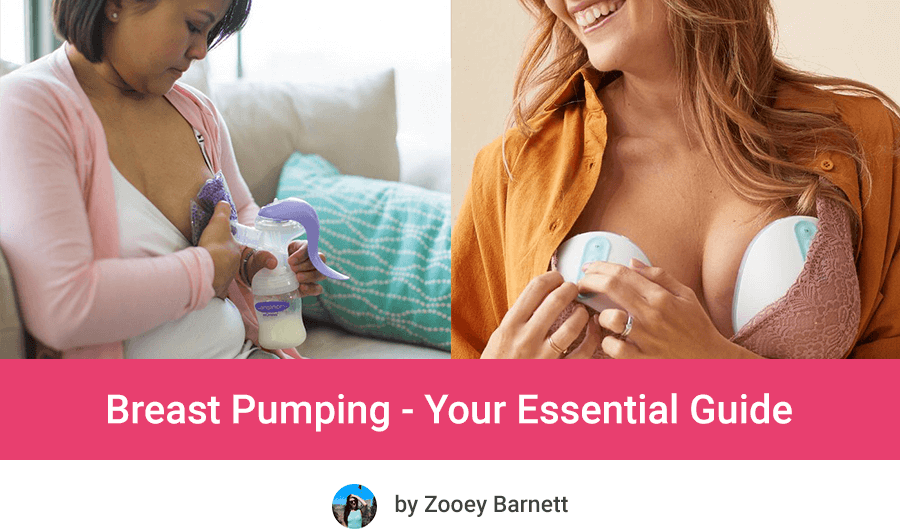
This article is not a substitute for medical consultation
For an infant breast-feeding is the healthiest form of feeding, as well as one of the best opportunities for mommy-baby bonding. Hereby, baby’s need for closeness is fulfilled from the first days. American Academy of Pediatrics recommends trying to breastfeed exclusively for the first 6 months (unless there’s medical contraindication). After that, between 7-12 months it’s recommendable to continue nursing and introduce solids. Nevertheless, it’s up to you if and how long you breastfeed and you need to do what’s best for you and your baby in your specific situation.
There are circumstances when breastfeeding may be difficult or even impossible – for various reasons. Like when your newborn baby is in NICU, the baby has problems with latching on or sucking, you need to get back to work and this means you’ll be away from the baby for a few hours each day, or you struggle with low breast milk supply.
If you want to feed your baby only with a breast milk, but the breastfeeding is difficult in your current situation, a breast pump may be a life-changer.
Of course there is a natural way of removing the milk from the breast (apart from nursing) – pumping milk with your hands. However, this technique is not the easiest one and may be also painful for some moms. In such moments a breast pump turns out to be hugely helpful. It will also allow you to share feeding with your partner or other caregivers, giving them opportunity to bond with the newborn baby too.
In this article we will focus on the essential information about breast pumps and different types of this device. Read along to learn how the breast pump works, find out whether this gadget is necessary for every mom and whether YOU need one.
Breast pump – what is it and why so many moms praise it?
A breast pump is a device that helps a lactating mother to express milk from her breasts. This ingenious device, comes in many different shapes, sizes and prices. It can be manual, where you power it using your hands or automatic (electric) – with a motor that does the pumping for you.
Lots of moms rave out breast pumps because of their ability to express milk quickly and painlessly. Some mothers also use the breast pump to stimulate and maintain lactation. It turns out that breast pumps can be helpful in restoring milk production in mom’s breasts, even after a few months break.
The device is recommended for women who gave birth to premature babies (or when the baby is in NICU and direct breastfeeding is not possible), for mothers returning to work, and for those who want to keep giving the baby only the breast milk, but need to go out for a few hours or days, or when the baby has problems with latching on and sucking. If chosen and used properly, a breast pump can make nourishing your baby a whole lot easier and will let you get some other stuff done.
Do you need a breast pump right away?
A breast pump is a marvelous accessory to have when circumstances call for it. However, not all moms require it right away or even at all. If you expect to be with the baby full-time, a pump may not be necessary at all. The consensus among lactation counselors is to purchase a pump if you anticipate being separated from the baby for 3-4 hours most of the time.
Some moms also plan exclusive pumping (EPing) and feeding baby with breast milk. In such case high-quality electric breast pump will be necessary.
Advantages of using a breast pump include:
Your baby can benefit from your breast milk even when you’re not around
You can leave the house without the fear that the child will have to drink infant formula. Lots of moms follow the rule “breast is best”. Breast milk has many positive effects on baby’s and mom’s health (you can read more about it in the last paragraph of this article) and with a breast pump your baby can still benefit from your breast milk, even when you can’t breastfeed your baby directly.
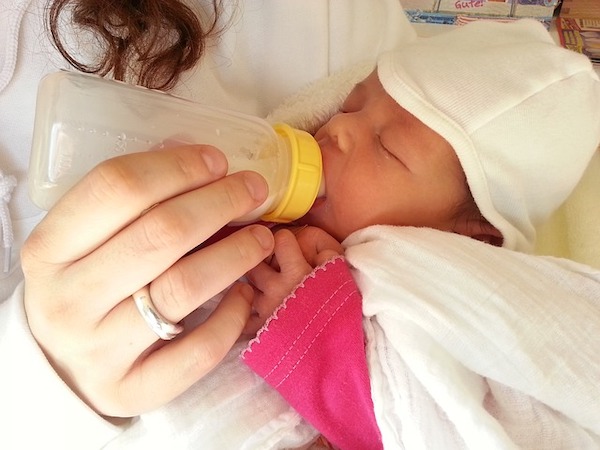
Unless you plan to take your infant with you wherever you go and nursing always goes smoothly, you’ll probably need a breast pump at some point.
If you’re getting back to work and you don’t want to switch to infant formula, it will be necessary to express and freeze milk for later use. If you are away from the baby for, let’s say 10 hours, you may need to carry the pump to your workplace and express regularly.
The possibility of expressing more food to freeze portions
It’s a very useful option in the case the mother has to leave for several days, or when the baby is with nanny or grandparents for a few hours each day.
Relieving engorgement (breast fullness)
Breast pump may come in handy when the breasts are swollen and sore, and feel uncomfortably overfilled. Keeping too much food in the breast can lead to painful blebs, plugged milk ducts or even breast inflammation (mastitis), which can be very painful and dangerous for a woman.
Besides being painful, engorged breasts make it difficult for the baby to latch, and this can lead to issues, such as sore nipples or baby won’t be putting on weight. When the baby is not nursing, pumping the milk regularly helps a lot in minimizing engorgement. Pumping some minutes before breastfeeding also helps in softening the areola as well as lengthening the nipples. This offers the baby a good latch.
In this case the best option would be an electric breast pump.
It’s important to keep in mind that engorgement may occur within the first few days after the childbirth, but also during weaning (in that case using a breast pump may be helpful, but also slowing down the process of weaning from the breast).
Facilitating the feeding process
Breast pumps are also often used to “prepare” the breasts for suckling. When the baby has sucking problems or the mother’s nipples are too hard, regular use of the breast pump can make them soften and stimulate breast to produce more milk, which will allow the baby to nurse more efficiently. Expressing milk may be also helpful in stimulating lactation (it’s a sign for your body that the baby needs more milk so your body should produce more milk).
If you nurse often but your baby still doesn’t gain weight, this may indicate low breast milk supply. You should consult a lactation specialist who may recommend you using a breast pump to support your lactation.
However, it’s important to remember that keeping milk production one step ahead of your baby actual needs may have negative effects, because your body may start producing more milk that your baby actually needs which increases the risk of engorgement. That’s why using a breast pump should be always adjusted to your specific situation (your health, your baby needs, your lifestyle) and consulted with lactation specialist.
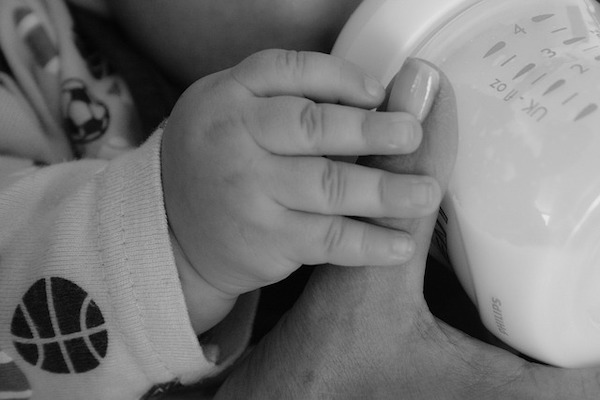
Medical reasons – why a breast pump may be essential
Breast pumps have lots of advantages that may encourage new moms to start using it. However, there may be also some medical circumstances when breast pumping will be necessary, even right after birth.
When tube-feeding the baby in the NICU
If you can’t breastfeed after the birth, the next best option is to express the milk for administration through tubes. Most hospitals have a hospital-grade electric pump that you can use and even rent for use at home. More on hospital-grade pumps in next paragraphs.
Baby with a cleft palate
Babies with a split cleft have breastfeeding difficulties because they can’t create a good vacuum seal to draw milk from the breasts. In such cases, you can express the milk with a pump and use a special bottle and nipple to feed the baby.
Evert inverted and dimpled nipples
Inverted and dimpled nipples pose quite a challenge when breastfeeding. Luckily, you can pull them out using your hands or with a breast pump.
When can you start breast pumping?
The best time to start breast pumping will highly depend on your circumstances and the condition of the baby. If you and the baby are healthy, and the baby is breastfeeding well right after birth, it’s okay to wait for 4-6 weeks before pumping (for example when you need to leave the house and separate from the baby for a few hours). This time allows breastfeeding to develop and establish, besides giving you and the baby a good hang of everything.
If you’re planning to go back to work sooner, I’d advise you to try pumping a week or two earlier to get used to it. The earlier the two of you can embrace milk expression and bottle-feeding, the easier and less stressful it will be for both of you once you resume work.
Keep in mind that if there are complications and the baby has to go to the NICU after birth or you have troubles with breastfeeding, you may need to start pumping right away. The good thing is that your hospital will most likely have a hospital-grade breast pump for you to use. If mom wishes to pump exclusively (EPing), she will also need to start using the breast pump right after birth. Of you experience engorgement during the first few days after childbirth, the lactation advisor may also recommend you to use the breast pump.

Should you purchase the breast pump before or after the birth?
Future mothers often wonder whether they should buy a breast pump before the birth or after. Some mothers wonder if it even makes sense to search for breast pumps if they are not planning to express the milk. It’s totally up to you, when you buy your breast pump or if you don’t buy it at all. But here are some things to keep in mind that will help you during your decision process.
On the one hand, it may turn out that a breast pump bought before the childbirth, was an unnecessary expense, because you won’t use even once or it won’t be adjusted to your needs (expressing frequency, your milk supply). On the other hand, looking for a breast pump after the childbirth, when it’s actually needed, can be stressful and you may not have enough time for proper search (as we all know during postpartum period new moms don’t have a lot of free time…).
So when it’s the best time to buy a breast pump?
It all depends on your situation. If you plan EPing you may consider buying a breast pump before the birth.
However, if you don’t know whether you will need the breast pump at all, or plan to use it only when necessary (like when you go back to work) but it won’t be necessary from the beginning, then it is worth doing research before birth but wait with the purchase until the first few days or weeks after the birth.
If it turns out that you don’t need it right away, but it may be beneficial later, you can always buy the pump in the weeks after the birth. In my opinion, it is definitely worth doing research before your due dat, check and read about different types and specific models of breast pumps, consult with lactation advisor and even choose 1 or 2 models that best suit your needs.
And if there are no contraindications after the baby is born (you and the baby are healthy), make sure that the breast pump you’ve chosen earlier really suits you (it’s properly chosen to your milk supply, your lifestyle and the frequency of expression you plan).
Initial research, getting to know what’s available on the market, and even pre-selection of a breast pump, will give you peace of mind and reduce stress during postpartum, when it turns out that you actually need to buy a breast pump. You’ll be prepared and have one thing less to worry about!
You can plan ahead and place a breast pump on your registry. It’s also important to check with your insurance company to see their rules about refunding a breast pump. Some insurance companies cover the breast pump but you need to purchase it in a specific time window. It’s always good to check this information before your due date.
Types of breast pumps & how they work
There are basically two kinds of breast pumps: manual and automatic. The latter type can be plugged in and/or run on batteries and has different features.
Altogether there are four types of breast pumps to choose from. Although choosing specific breast pump type and model will depend on your lifestyle and preferences, there are some brands and models that you need to know about, because they are consistently recommended by moms and rank high in many rankings.
It’s important to remember that pumping can be time-consuming, but it shouldn’t be painful or frustrating. That’s why choosing the right breast pump is so important – it can be a game-changer for your breastfeeding success.
Manual breast pumps
These pumps have a lever that you keep squeezing to create enough suction for milk expression. Although they are not as effective as electric pumps, most moms say that manual pumps closely mimic the baby’s sucking patterns. This type of pump is not a good choice if you plan on using a breast pump often.
The manual breast pump can be useful for occasional milk expression, but unfortunately it’s less useful if you want/need to pump the milk everyday. Many moms use a manual breast pump at the beginning of breastfeeding, when there is an engorgement (breast fullness). In that case you may want to choose natural silicone pump like Elvie Curve or Haakaa.
Unfortunately, if the breasts do not produce enough milk, this type of a breast pump won’t be very helpful. Moreover, using a manual breast pump requires some practice, strength and finding the right pumping rhythm. For many women this is troublesome. Electric (or wearable) breast pump will be much better choice if you have low milk supply or want a quicker pump that doesn’t require using hands.
Medela Harmony Manual Breast Pump
The Medela Harmony is one of the best-selling manual pumps this year- and for a reason. This pump consists of two 150 ml milk bottles with lids, an ergonomic handle, and a 24-mm breast shield.
In a nutshell, most parents appreciate that it expresses milk a little more quickly than typical pumps. They also like that it’s gentle on the nipples besides having a more effective suction.
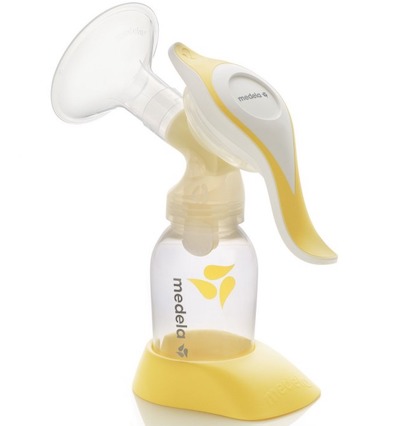
What differentiates the Medela Harmony from other low-end manual pumps is its 2-phase expression mechanism. This is a research-based technology that mimics the stimulation and let-down phases of baby’s breastfeeding sessions. The feeding bottles also have Calma teats that help in maintaining your baby’s breastfeeding behavior.
Lansinoh Manual Breast Pump
Lightweight and super compact, the Lansinoh is another trendy manual breast pump worth checking out. This affordable manual breast pump comes with one 160 ml bottle with lid, NaturalWave nipple, and two flanges (25mm and 30.5mm).
Similar to the Medela, the Lansinoh also has 2-phase pumping modes. These phases complement the ComfortFit breast shields to make milk expression as pain-free as possible. Again, its compact and stylish design makes it super portable for those times when you have no option but to pump.
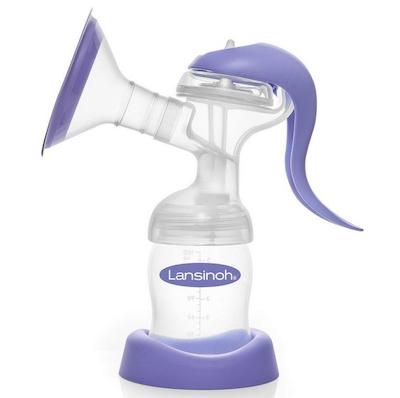
Electric breast pumps
Unlike manual pumps, electric pumps have a motor that creates the vacuum suction required to remove milk from the breasts. Consequently, these models require much less effort to operate, and you won’t be dealing with scalded and aching hands. This is what makes them a perfect choice if you plan to pump frequently or exclusively.
Pretty much all middle- and high-end electric pumps have a dual-pumping function. This lets you pump both breasts simultaneously, thereby saving you time. Also, you’ll find personal-use automatic pumps that allow you to fine-tune the suction to your baby’s suckling rhythm. It typically starts with rapid, short and frequent suctions and then changes to a slower, deeper suck/swallow pattern. Thanks to mimicking baby’s sucking, milk flow is faster (but it doesn’t mean you’ll produce more milk).
There are also pumps that use a constant vacuum with adjustable suction settings. However, usually the breast pumps that imitate baby’s suckling are better and easier on breasts than a constant vacuum.
The pace of expressing should be also chosen properly, so that the whole pumping process isn’t too long and does not cause pain in nipples. Electric pumps usually have a few speed settings which is an awesome function.
Slower speed is more recommended for moms who express milk only occasionally, but not if they do it often because slow speed does not help in maintaining the right supply of milk. Higher speed helps to maintain adequate milk production and is recommended for moms who want to pump milk regularly.
The major drawback of electric breast pumps is the roaring motor – although there are some that are quiet. Again, they can be bulky because they have more components, and therefore, not as portable as hand-operated pumps.
Medela Pump in Style
The Medela Pump in Style has, for long, been regarded as the best electric pump for working moms, thanks to its stylish tote. This tote has a compartment for the pump and a removable cooler bag with an ice pack that accommodates up to 4 milk bottles. It also has enough space for your small items, such as your car keys, wallet, and phone.
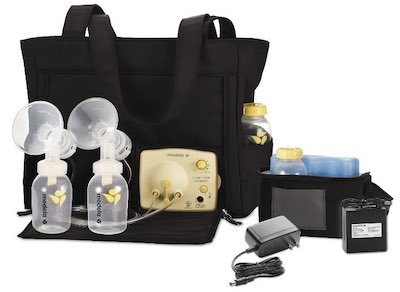
The pump itself is powerful. It has a dual-pump function and 2-phase milk expression technology. Both of these minimize the time that you take emptying your breasts significantly. This pump can run from a 110v or 240v port or even from the portable rechargeable battery pack that it comes with.
Lansinoh SmartPump Electric Breast Pump
The Lansinoh SmartPump is a model that you’ll come across a lot in your search for the best electric breast pump to use. This is a double-pump version, although there’s an option to use it as a single.
What stands out with the Lansinoh SmartPump is its level of customization. With its intuitive control panel, you can choose what’s comfortable for you from its 3 pumping styles and 8 suction levels. This pump also connects to Lansinoh Baby App to simplify the new mommy haze by tracking pumping and breastfeeding sessions and diaper changes, among other things.
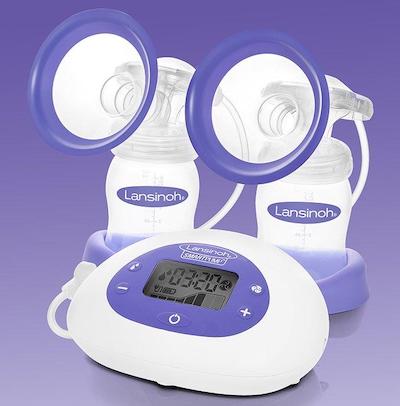
Wearable breast pumps
Wearable breast pumps are game-changers for moms with hectic schedules. They are also worth considering if you’d prefer a pump that allows you to multitask. This type is useful if you have more kids to run around after or need to get chores done around the house.
Just as their name suggests, these pumps are designed in a way that allows you to wear them under your nursing bra. They have an all-in-one design and are completely wireless and tubeless. They don’t require you to connect them to the mains or a pack of batteries to operate. Also, they don’t have tubes running from the pump to the bottles.
If you’re a working mom, this design allows you to continue breastfeeding even in areas that would otherwise be impossible, including in the office. For a stay-at-home mother, this hands-free and wireless design knocks off one crucial activity from your routine, thereby creating more time for other chores. You can pick up your older kids from school or spend time playing with them or reading to them, do the dishes, read a book or do online shopping while still pumping.
Willow Pump Generation 3
Willow was first all-in-one in-bra wearable pump. You simply fit the flanges over your breasts and into your nursing bra. No cords, no long tubes that would disturb you. You can wear it at any time and simply go about your daily life.
The Willow 3 makes a perfect choice for modern moms who don’t want to be tethered to an AC-powered electric pump. One of its interesting features is its three pumping styles and seven adjustable suction options for your comfort. Moreover, Willow senses your letdown and it switches automatically between stimulation phase to expression phase. It’s so convenient.
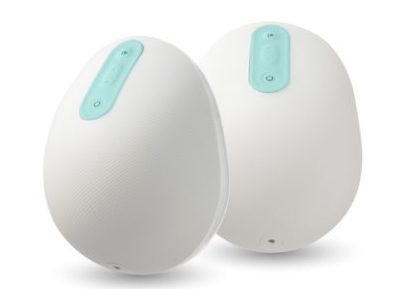
As a smart device, you can control it from the buttons on each pump or from the Willow App (available only in the US!). This App also keeps track of the volume milked from the previous sessions besides offering you personalized tips.
The Willow 3 pumps directly into a spill-proof milk bag. These bags are self-sealing so that you can toss them in the freezer, fridge, or cooler bag after the 25-minute pumping session.
What’s really awesome is that now Willow offers 3 sizes of flanges (breast shields): 21 mm, 24 mm and 27 mm. On their website you can find some clever tips how to determine your size properly.
>> Our full review of Willow Breast Pump is here <<
Hospital-grade pumps
These refer to heavy-duty pumps with powerful motors that are engineered for durability. What qualifies these pumps as hospital-grade is a unique suction wavelength and a range of programmability, both of which allow a mom to collect the optimum amount of milk possible. They are design to resemble baby sucking pattern as much as possible.
Again, unlike standard electric pumps, hospital-grade versions feature a closed system. This design prevents milk from flowing into the motor, which would otherwise cause cross-contamination. This is what makes them ideal for use by different moms in hospitals.
The hospital-grade breast pump is a device that many mothers use, but there is no reason to worry. Each woman has her own lactation set, into which milk is pumped, it is a fully hygienic way of pumping and storing the food. The mother can express milk from both breasts simultaneously.
Your lactation consultant may recommend a hospital-grade pump if you have lactation issues, or if the baby is born premature or in the NICU. This type of breast pump is best for helping new mom in establishing and supporting her lactation, this type of pumps express milk from your breast at similar rate as a nursing baby.
Hospital-grade breast pumps are large, bulky and very pricey. If you need one, it’s probably better to rent one from hospital or get an electric hospital-strength breast pump – cheaper and smaller model, but with a similar settings and quality. Hospital-strength pumps have stronger suction than other personal-use electric pump, but are cheaper and more portable than hospital-grade pumps. An example of such pump is Spectra S1.
Spectra S1 (Best Hospital-strength Pump)
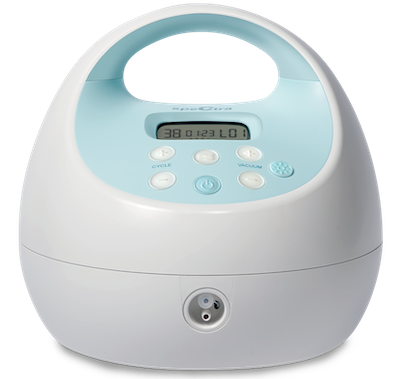
The powerful motor in this double electric pump is just what you need if you plan to pump exclusively. But the standout feature is the ability to control both the suction level and cycle speeds separately. Although it has a slight learning curve, the level of convenience that it offers, especially for a working mother and mothers who are EPing is priceless. The S1 has a 2-level nightlight and backlit screen for easy pumping in the dark.
Its battery-powered motor is relatively quiet and lasts up to about 3 hours. It’s much less bulky and not as expensive as other hospital-grade pumps out there. Unique thing about Spectra S1, that distinguishes it from electric breast pumps, it its closed system. It prevents the milk from backing up into the tubing. Therefore it prevents from contamination and ensures the pumping process is more hygienic. The bacteria, viruses and mold is kept away from the pump pieces.
Basic components of a breast pump
Breast pumps vary a lot in terms of design. However, here is a glossary of components that pretty much all of them employ:
- Flange – also known as a breast shield, this is the cone-shaped plastic part that you fit over your breast.
- Membrane – this is a thin and flexible plastic that creates the vacuum suction required to remove milk from the breasts. It’s also the part that you’ll be replacing the most.
- Valve – the valve is located between the top part of the pump and the milk collection bottle. It closes momentarily to allow vacuum creation and opens to allow milk into the container.
- Tubing – this is found in electric pumps, and it links the pump unit to the motor.
- Backflow protectors – these components are specific to Spectra pumps. They prevent the pumped milk from flowing back into the motor.
- Milk bottles or milk bags – these are the containers that you pump the milk into. Most of the milk bottles can be fitted with a nipple if you want to feed the baby immediately. Some also come with caps for storage. In-bra pumps, such as Willow pump, use plastic bags.
How to choose the best pump for your needs
A breast pump is a critical investment that significantly affects the success of your pumping and feeding sessions. So, whether you’re eyeing a manual, electric, wearable or hospital-grade one, be sure to get a model that meets your needs. There are a few things that you should consider when choosing the best breast pump. It may be also helpful to get advice from a certified lactation consultant.
Below you can find a quick guide on important considerations when buying a breast pump.
Occasional or frequent pumping?
This is one of the most important criteria because it determines whether you should get a manual or electric pump.
For occasional pumping (like when you’re away from your baby twice a week, for 1-2 nursing sessions) you can get manual pump or a small electric one that works with batteries.
If you plan to pump regularly, choose an electric pump with better vacuum power and adjustments in suction and speed.
If you plan exclusive pumping it’s best to choose a pump with more adjustments, sucking pattern that mimics baby’s nursing – hospital-strength pump like Spectra S1 or a high-quality electric pump that will be easy to use on a regular basis.
Hospital-grade pumps are designed for moms who don’t have established milk supply yet and/or their baby is less than 8 weeks old. This type helps in case your or your baby’s health condition doesn’t allow for nursing. It’s designed to bring in and maintain your lactation.
Adjustability & speed settings
If you are about to buy a breast pump, consider a model that allows you to customize the cycle speeds and suction level to your comfort needs.
You should consider how often you will need to use it (which may be hard to define before the baby is born), hence what speed you will need (slower speed – occasional pumping, higher speed – frequent pumping). This should be one of your most important criteria.
It’s best if the breast pump mimics baby’s natural nursing rhythm and automatically switches between two distinct modes. At first rapid suction simulates baby’s quick and short sucks when the baby begins suckling – to achieve the letdown response. Then it switches to slower, deeper suction which mimics baby’s sucking pattern, and stimulates the most milk flow.
Of course there are also breast pumps that allow you to change the pumping rhythm, speed and suction individually by using buttons on the control panel, instead of relying on preset settings. Variable speed and suction settings help to avoid nipple discomfort.
All moms have different milk supply and different sensitivity to suction (some may need more vacuum power to get the milk flow), that’s why it’s good to have an adjustable pump. But keep in mind that even the most multi-function and adjustable breast pump won’t be as efficient as your baby suckling 🙂
Size of the breast shields
One reason that makes pumping painful is using flanges that are either too big or too small for your nipples. Breast pump flanges come in varying sizes depending on the type of breast pump and the brand you choose. Most common are the 24mm and 27mm flanges.
Before you decide to buy a specific breast pump, check on the brand’s website if you can replace the breast shield with a different size and whether they are included or sold separately.
If you pump with too-small shield it may cause sore nipples or even lead to damages. If your nipples are turning red or white, your breast still feel full after pumping or too much of your areola is getting sucked in, it seems like you’re using too-small breast shield. If you’re not sure what size you should get or worry about your pumping process or your body, talk to your doctor or lactation expert immediately.
Single or double pumping function?
Most moms don’t mind pumping one breast first and then switching to the other when using a manual pump. However, if you’ll be pumping in time-crunched scenarios, for instance, at your workplace, or if you simply want to do it quicker, an electric double breast pump will make more sense as it milks both breasts simultaneously. This cuts the pumping session by half, thereby allowing you more time for other things.
Scientific studies show that expressing milk from two breasts simultaneously may allow mother to acquire almost 20% more milk than alternate pumping. They also show that such milk has more fats, therefore it has more calories and it’s more nutritious.
Portability
If you want a pump that you can use at work, portability should be one of your biggest concerns. Besides its size, consider its weight, ease of assembly, and use, as well as its noise level.
Ease of assemble & cleaning
You’ll be cleaning this thing after each use therefore it should be easy to take apart and reassemble. The more small parts it has, the longer and more difficult it will be to clean.
Noise
Manual pumps are quiet, while electric pumps are usually more noisy, but not all of them. If you want your pump to be discreet, make sure to check its noise level.
Your budget
Electric breast pumps are notably pricier than manually-operated versions. However, the additional expense is worth it as these models are fast and not as tiring as hand-operated pumps.
On the other hand, wearable pumps are much more expensive than electric and manual pumps. But that’s because they are hands-free, incredibly portable, and discreet. As other smart devices, wearable breast pumps are bigger investment.
Apart from these criteria, you’ll need to think about your lifestyle and employment situation (will you be at home for the whole time or maybe you’ll be away from baby on a regular basis). Another important thing is your feeding preferences – it’s totally up to you, if and how long you plan on breastfeeding or plan on exclusively pumping.
Once you decide on a specific type and model or a breast pump, take your time to learn about how it works, read the instructions, check how to clean it and practice assemble a few times to become more comfortable with it. If you get to know it before you actually need to use it, the first pumping sessions will be a whole lot easier, which is especially important in the first few weeks as a new parent which are often quite stressful and difficult.
What accessories do you need when breast pumping?
- Storage bottles or milk storage bags – they are usually included with the pump, but it’s good to get extra ones if you’re creating a freezer stash of expressed milk
- Cooler bag – it will be useful for temporary storage if you’re pumping outside the house
- Hot/cold packs– these will help in relaxing your engorged breasts, thereby minimizing pain. They also get you in pumping mood when it’s chilly.
- Nursing pads– also known as breast pads, these are liners that you put between the nipple and nursing bra to absorb excess milk between pumping and feeding sessions.
- Nursing bra, hands-free bra – generally speaking clothing that gives you easy access to your breasts and allows you to put the flanges under it without any problems
- Bottle brush and nipple cleaning brush; dishwasher basket for small pump parts; drying rack – these accessories will be very helpful for proper cleaning, which is especially important with all those small pieces
- Anything that reminds you of your baby– lactation experts agree that pumping near your baby boosts production. If you’re away from her, watching a video recording of her or sniffing a blanket with her smell should set you in the mood.
Safety
This section covers all that you need to understand about breast pumping safety, and how to clean the breast pump.
Important general rule: Don’t get a used pump
It may be tempting to buy a used pump because it’s cheaper or borrow one from a friend but you should never do that! FDA and breastfeeding experts warn against it. Breast milk can carry bacteria and viruses – including HIV and cytomegalovirus – and they can contaminate pieces of pumps (like tubing) and pass the infection to you and your baby.
How to use a breast pump
Breast pumps come with a guide on how to use them. For convenience and safety, you must understand the instructions and follow them, as each pump may differ a bit. Below you can find general rules how to use the breast pump, but always follow the guide for your specific breast pump.
Typically a pumping session lasts about 10-15 minutes per breast, but the general rule is that you should pump only until it’s productive and comfortable for you.
Create a ritual of it – pump in the same place in your house, apply a warm compress to your breasts before it, you can play your favorite music or try relaxation techniques. Include your baby in this process – keep their photos, blanket or sleepers at hand to remind you of your baby. You can also gently massage your breast and rub the nipples to start the milk flowing. It’s important to be relaxed and stress-free during pumping. Postpartum period isn’t always easy, requires from you to understand your body well. If you want to start pumping, choose time when no one disturbs you and you’re able to relax.
It’s good to develop a milk expression routine (schedule). Pump at the same time each day and try to stick to the same number of expressions each day, especially at the beginning and if you’re trying to support your lactation or increase you milk supply. It’s also important to keep the track of your pumping sessions: when and how long you pump, and how much milk you extract.
Lots of breast pump brands offer special mobile apps dedicated for their pumps. If you’re breastfeeding, but sometimes are away from the baby (and you will miss 1-2 feeding sessions), it’s recommendable to pump during the same times your baby would normally nurse – to keep your lactation strong. If you’re stockpiling your milk, you can also try to express milk from one breast while nursing your baby on the other.
Lots of lactation experts advice that the best time to express the milk is when the breasts are fullest which is usually in the morning. If you’re just starting using an electric breast pump, begin with lowest suction to get comfortable. It may even take a few days or weeks for you to get used to it and find the comfortable and most productive rhythm.
How to use a manual breast pump
- Wash your hands and ensure that the pump and all the components are clean and sterilized.
- Place the flange over your breast so that it covers the nipple and areola. Ensure that it creates a good seal to prevent air from getting in.
- Squeeze the lever mimicking your baby’s sucking patterns to stimulate let-down.
- Pump one side for 10-15 minutes or 2-5 minutes after the last drop and then switch to the other side.
How to use an electric pump
- Start by cleaning your hands thoroughly and ensure that all the accessories are clean too.
- Turn the pump on and place the breast shields in place.
- Use the controls on the control panel to adjust the suction to a comfortable level. Start with a moderate level to stimulate let-down before switching to a higher setting for collection.
- When using only one side of a double breast electric pump, always seal the other side for maximum vacuum suction.
How to clean a breast pump
Everything that comes into contact with your breast and breast milk will require cleaning after each pumping session. Disassemble all the parts and wash each part separately and carefully in a large basin in the sink using dish soap, warm water and a brush (you can get a special bottle and nipple brush too).
Next, rinse them in hot water for 10-15 seconds. You can also dip them in boiled water for 5 minutes to sterilize them (check your breast pump specific instruction about it). Lastly, let them dry on a rack or clean paper towel (cloth towel is not a good choice because it may be a source of bacteria and pother germs. Once the pump is fully dry, reassemble it before before storing in a clean area. Try not to touch the cleaned parts that come into contact with your breast milk.
You can also wash most of these parts on the top rack of the dishwasher using the hot water cycle (read the instructions for your pump to make sure it’s dish washer safe). Let them dry before storage.
If you see water droplets from condensation in the tubing after finished pumping, you can simply turn on the pump for a few minutes and let the tubing dry. Generally speaking the tubing doesn’t come in contact with your breast milk therefore you don’t have to clean it after each use, however, if the milk gets into tubing, you should clean it accordingly to the instructions. Always let it air dry fully before you use your pump again.
Some experts even say that if tubing has milk or mold in it, you should throw it away immediately, because it’s difficult to clean the tubing properly.
Check frequently the condition of the flanges and tubing. If you notice any damages, tears you should replace it immediately. Dirty flanges and tubing will affect your milk supply and poses a risk of contamination.
| Many lactation consultants advise sanitizing the pump at least once a day to make sure the germs are removed. It’s important to sanitize the pump especially when the baby is less than 3 months old, if the baby was born prematurely or has medical condition that weakens their immune system. Keep in mind that not only the pump should be sanitized, but also other items – for example the bottle brush or wash basin. Sanitizing can be done in two ways: by steaming or boiling the items, but you should check manufacturer instructions for you pump, whether the pieces can be steamed or boiled. First, clean the pump and all items. Then steam it (you can use microwave or plug-in steam system) or boil disassembled pieces for 5 minutes in a pot, if the manufacturer instruction allows for this. Be careful when removing items from the pot (use clean tongs) and allow them to air-dry. Once each piece is fully dry, reassemble the pump and store it in a clean, protected, unused and sealable container. The wash basin and all brushes should be stored in a clean area as well. |
One more important thing. On some mother forums or blogs you can read that it’s okay not to clean the pump after each use, it’s enough if you put it in the refrigerator and this will “kill” all germs. That’s not true! CDC warns against simply storing your pump in the refrigerator between pumping sessions and I also advice you against such thing. Always remember to clean the pump properly after each use – otherwise you’re risking a food poisoning or worse.
How to store breast milk
After pumping, breast milk can stay for up to 4 hours at room temperature and up to 4 days in a refrigerator. If you don’t plan to use it within the next 4 days, be sure to put it in the freezer right after pumping. It may stay in the freezer up to 3 months. But keep in mind the milk changes over time as the baby grows to provide them with proper nutrients and vitamins, so it’s best to use your stock quicker.
Importantly, always use sterilized containers and bags meant for storing breast milk. Milk storage bags may be more convenient choice than bottles, because you they freeze flat and can be stacked. No matter if you choose bottles or mags, use only those which are specifically intended for breast milk storage. Also, label each container accurately with the fate and time the milk was pumped. Follow first-in-first-out method when feeding the baby.
You should never use containers with the recycle symbol number 7 because this means it contains BPA which may be harmful for the baby. Use bottles, bags and other containers that has “No BPA” labelling.
>>More on the breast milk storage in this article

How to prepare stored breast milk for the baby
Frozen milk should be placed in the refrigerator overnight to thaw. If in a hurry, you can also defrost it by placing the container or bag in a jug with warm water, but never in the microwave or over. Don’t put it in a boiling water either!
For refrigerated milk, most moms prefer leaving it to reach room temperature before serving. You can also hold it under running tap water or place it in a jug of warm water to hasten the process. Keep in mind that you should never refreeze milk after thawing.
Breastfeeding vs breast pumping & bottle feeding
Here’s our summary of advantages and disadvantages of breast pumping (if you do it often or exclusively), as well as pros & cons of breastfeeding.
Why breast pumping is great?
1. It promotes bonding with the rest of the family
Pumping allows other family members to bolster their bond with the baby as you pump.
2. It split caregiving duties
It offers your partner an opportunity to get actively involved in caring for the baby. With pumped milk, dad can bottle-feed the baby as you get the much-needed snooze.
3. Monitoring feeds is easier
Pumping and bottle feeding makes it much easier to monitor how much milk the baby is taking.
4. It helps address issues of low milk supply
Having a freezer stash of breast milk helps in minimizing anxiety and worries when you’re experiencing low milk supply.
5. More milk = more breaks
Pumping and storing milk also offers you some free time to go for a date or even a vacation while ensuring that the baby has enough breast milk supply.
What to keep in mind about breast pumping
1. Cost
Although the market has cheaper options, the cost of the best breast pumps and accessories can get high very quickly.
2. So many parts to clean
Pumps have tiny parts that require regular cleaning and sterilizing.
3. Not all pumps are portable
Electric and hospital-grade breast pumps are relatively bulky and heavy to cart around.
4. Contamination risk
There is a risk of contamination during pumping, storage, thawing, and warming, unlike in breastfeeding.

Advantages of breastfeeding
1. Lower risk of contamination
Since your baby is consuming the milk directly, the risk of contamination and making the baby sick is shallow.
2. Bonding
While there are other ways of creating a bond between the two of you, nothing beats the skin-to-skin contact that comes with breastfeeding.
3. Lower risk of overfeeding the baby
When breastfeeding, babies can self-regulate, thereby minimizing the risk of overfeeding.
4. It’s much more convenient
A breastfeeding session requires you and the baby only. You’ll never worry about forgetting a crucial component of the breast pump, for instance, a flange, an ice pack, or battery pack.
5. Tons of benefits for baby’s health
It support baby’s brain and vision development and promotes healthy digestion. It provides baby’s immune system with antibodies against different illness hereby strengthens their immune system. Breast milk may also decrease risk of SIDS. It may reduce the risk of various diseases later in life.
6. Benefits for mom’s health
Breastfeeding may reduce the risk of breast and ovarian cancer. It also a great helper in getting your pre-pregnancy body back.
Why you may feel discouraged from breastfeeding
1. You have to always be close to the baby and ready to nurse
If the baby is on breast milk only, then you can never be separated from him for long.
2. Problems with latching & problems with nipples
Poor latching affects the quality of feeds and the overall health of the baby. Besides, it causes sore nipples that could easily lead to bigger issues, including mastitis.
3. Breastfeeding strike
Some babies go on a breastfeeding strike as early as one year. If this happens, pumping and bottle-feeding might be the only option.
Okay, that’s it! Now you have all the basic and essential information about breast pumps. I put a lot of effort in this article to gather all the crucial information and I hope you enjoyed reading it and that you found what you needed!
I encourage you to browse around my website and check other articles on how to clean the pump, how to store the breast milk and my new reviews of breast pumps!
The purpose of this article is informative. It’s not a substitute for medical consultation or medical care. Remember: safety first! Before you start breast pumping and/or have any doubts about your or your baby health condition, consult with a qualified lactation advisor and/or your GP!
References:
https://www.ncbi.nlm.nih.gov/pmc/articles/PMC3698671
https://www.fda.gov/medical-devices/breast-pumps/choosing-breast-pump
https://www.womenshealth.gov/breastfeeding/pumping-and-storing-breastmilk
https://www.stanfordchildrens.org/en/topic/default?id=milk-expression-techniques-90-P02360

